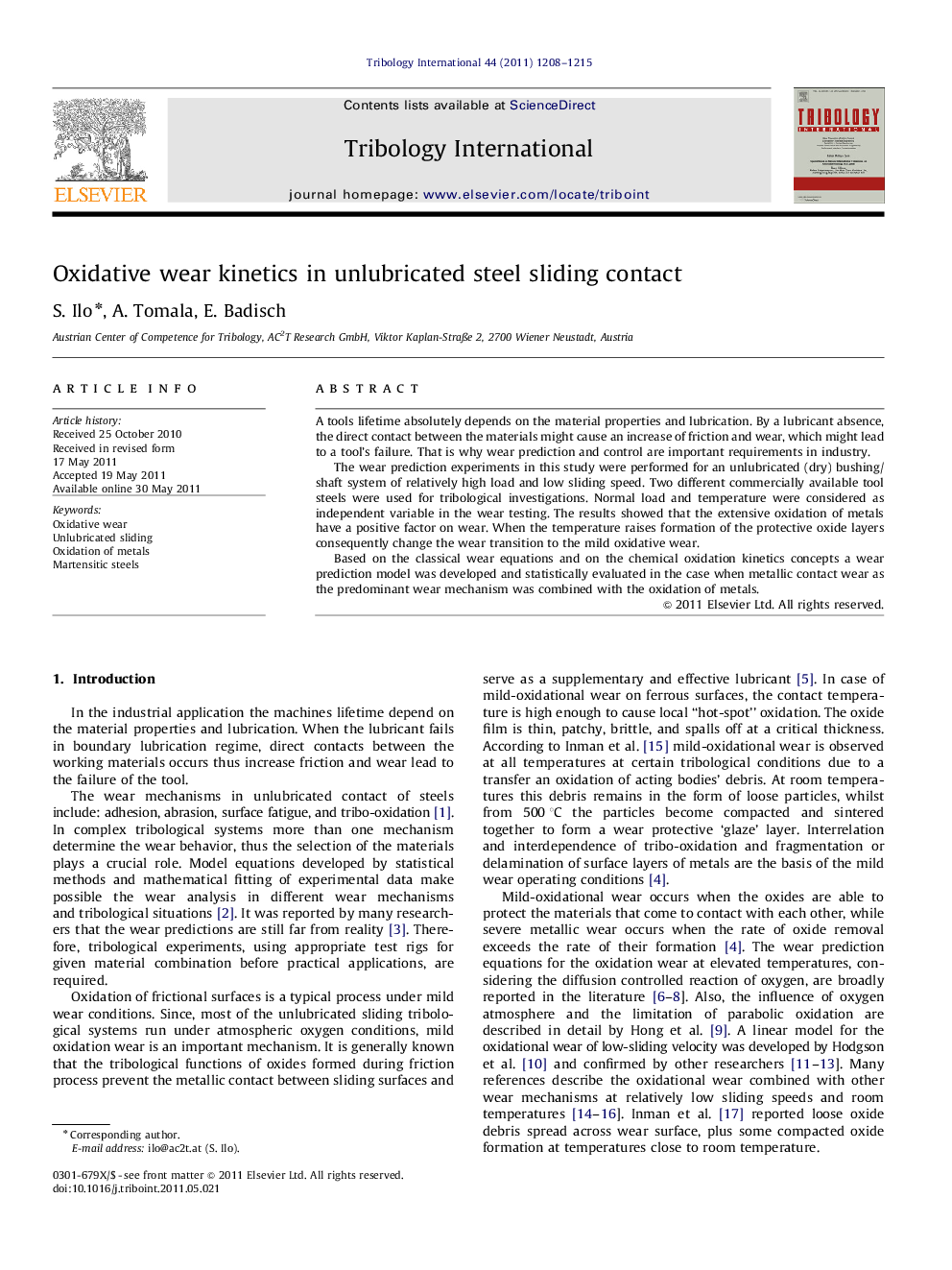| Article ID | Journal | Published Year | Pages | File Type |
|---|---|---|---|---|
| 615584 | Tribology International | 2011 | 8 Pages |
A tools lifetime absolutely depends on the material properties and lubrication. By a lubricant absence, the direct contact between the materials might cause an increase of friction and wear, which might lead to a tool's failure. That is why wear prediction and control are important requirements in industry.The wear prediction experiments in this study were performed for an unlubricated (dry) bushing/shaft system of relatively high load and low sliding speed. Two different commercially available tool steels were used for tribological investigations. Normal load and temperature were considered as independent variable in the wear testing. The results showed that the extensive oxidation of metals have a positive factor on wear. When the temperature raises formation of the protective oxide layers consequently change the wear transition to the mild oxidative wear.Based on the classical wear equations and on the chemical oxidation kinetics concepts a wear prediction model was developed and statistically evaluated in the case when metallic contact wear as the predominant wear mechanism was combined with the oxidation of metals.
► This work is focused on the wear prediction experiments for unlubricated bushing/shaft system. ►At high temperatures formation of protective oxide layers, change the wear to mild oxidative wear. ► Extensive oxidation of metals has a positive factor on wear. ► Based on the classical wear equations and chemical oxidation kinetics, wear prediction model was developed. ► The model was used in case when metallic contact wear was combined with the oxidation of metals.
